The arthrosis of the knee joint is slowly progressive inflammatory disease of deigenerative common disease. Most often, this disease is observed in medium and older people and is the most common cause of skeletal muscle pain in the zone of common knees and disability. You will learn from this publication how to treat the knee wrist arthrosis.
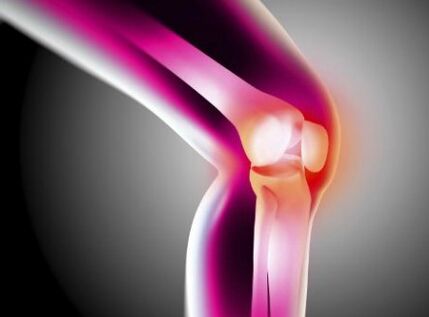
General description
In the knee joint, femur and tibia are covered with a hinged cartilage. There is also another kind of cartilage fabric, forming such a modeling menisci, which act as layers or shock absorbers. The shared liquid adds additional protection and smoothness. The osteoart begins to develop if the cartilage that protects the bones is disturbed and damaged, as a result of the exposed surface of the bone, and the articulated lubricants stop producing the amount in the requested amount. In this case, a complete and partial loss of cartilage can be noticed. This process is often insulated with a specific area in the joint, in such cases, it may cause injury and chronic joint wear.
Deforming the arthrosis of the knee joint is characterized by the process of destroying its cartilage gyms. In the future, they are closest fabrics, such as ligaments and bones, can also include the process. Gonart or Arthrosis Knee joint, due to the loss of cartilage, is accompanied by increasing stiffness and articulated deformation. Bones (osteophytes), which are the pathological growth of bones, can sometimes be felt on the outside. Bone surfaces are deformed and are no longer close and do not fit each other as in healthy joints. As a result, the restriction of the movement increases.
At the same time, pain appears, which is especially strong when moving after prolonged real estate, for example, in the morning, as well as at night, which ultimately leads to a reduction in the quality of life. Stress can also cause pain in affected compound. The indirect sign of the pathological change of cartilage is the visible narrowing of the common cavity between the femoral and tibia in the X -Ray image.
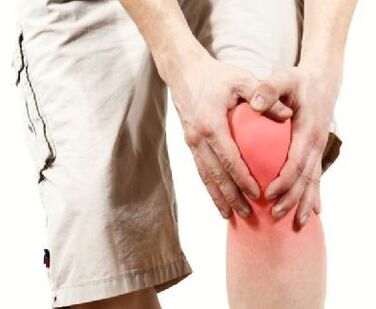
Reasons
There are several reasons for arthrosis: this is the process of aging and wearing cartilage, surplus, injuries, autoimmune diseases in which immunity attacks its own articulated tissue, causing inflammation and its subsequent destruction. The example is rheumatoid arthritis, in which both joints affected and disability develops. Some experts combine concepts such as arthritis and knee joint arthritis, symptoms of these diseases are similar and are often caused by the same reason.
Reduction of blood supply in the head of poor can also cause estimated ranking, in this case they talk about aseptic necrosis. Inadequate formation of the knee joint in early childhood can lead to the displacement of the mechanical axis and the degeneration of the knee joint. Post -Traumatic arthrosis are secondary and develop as a result of damage to menus, front or rear frowning ligaments.
Symptoms
There are three degrees of knee joint arthrosis, each of which has its own signs. In the first phase, there is mild pain, discomfort in the painful spot and periodically in the emerging swelling. The second degree is accompanied by increasing symptoms, the appearance of crumbs and mobility limit. When a painful sensation is practically not leaving a person, and the cartilage is thoroughly destroyed, the disease enters the armrose of the knees 3. Degree.
The pain for arthrosis can appear suddenly, but most often develops slowly. A person can notice pain in the morning, after lifting out of bed. The knees can hurt when you walk the stairs, or when you have to enter, and often pain occurs only during a walk. For inclement weather people, time changes can also cause joint pain.
Swelling is a consequence of inflammation, which is periodically increasing with arthrosis. Edem can also be connected to bone formation or accumulation of excess fluid in the knee. They can be more pronounced after a long period of inactivity, for example, in the morning or after a long stay on the desktop. The skin can become reddish and hot when touching. If a chronic inflammation of the joint occurs, pain and edema removal is usually achieved by getting anti -infalmator drugs.
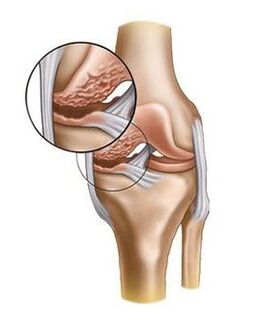
The loss of stability is developed over time due to weakening muscles and instability of the entire system. From time to time, situations arise when a person simply can't bend or completely correct the leg in the knee. Such a symptom usually monitors knee arthritis in 2. Degree. He feels he feels when he moves because the cartilage has lost its original smoothness and the required amount of sinovial lubrication. In later stages, a cramping sound can be caused by the fact that the bones descend against each other when moving.
A limited range of movements can be seen when climbing stairs or during the exercise. Many are forced to resort to the help of walkers or stone to move. The deformation of the knee joint may be the most terrible symptom of arthrosis, as it indicates non-refundable changes in the wrist, turning a person in a disabled person. The knees can turn to each other as well as outwards. The knee deformation is barely noticeable for significant.
Diagnostics
The definition of osteoarthritis of the common knee begins with the physical examination of the doctor, the study of medical history and talks with the patient. Be sure to pay attention to a doctor who most often causes pain and tell us about cases of disease in the family, if any.
An additional diagnosis is done with:
- radiography, which can show the presence of bones and changes in cartilage;
- Magnetic resonance imaging;
- Blood tests allow you to identify autoimmune disorders.
How to treat your knee wrist arthrosis, what are the drugs needed for that? Look for answers to these questions further.
Principles of treatment
The standard treatment of such diseases such as the knee joint arthrosis is focused primarily by removing pain and removal of functional restrictions. It is worth knowing that painkillers weaken only symptoms, but are unable to influence the course of the disease and return the injured cartilage. For treatment, the intoxicating analgesic, not-thesteroidal anti -infalm ratio drugs, slowly acting golden preparations, corticosteroids, methotrexate, etc.
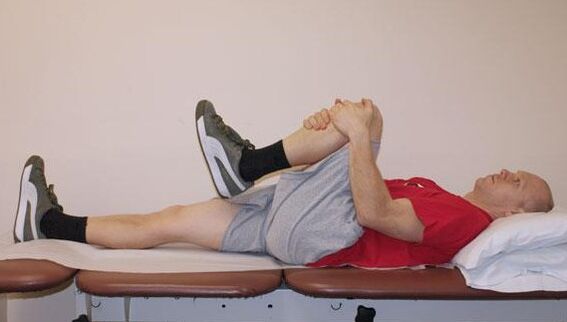
In addition, surgical intervention may be needed, as well as physiotherapy and physiotherapy procedures. Gymnastics with the arthrosis of the knee joint helps significantly in treatment, exercises select the present doctor. Despite the fact that in modern pharmacology are active research and development of the most effective and simultaneous medication for the treatment of arthrosis, most medications still have their side effects and extended use to disrupt the normally functioning of the system and organ.
Drug treatment
Therapy with the drugs of the joint knee arthrosis provides for three main rights:
- The use of non-atenenic drugs required to relieve pain and reduce the intensity of the inflammatory process in the tissues;
- Taking medications for the renovation of cartilage, which include hondroprotectors: glucosamine and hondroitin;
- Use of cream and fat in a complex therapy of arthrosis deformation.
Combined with physiotherapy and manual therapy, taking medicines allows you to slow the process of destroying articulated cartilage, speed up the cartilage regeneration and return the normal functioning of the limbs.
The main goal of medications is the elimination of pain, improving the nutritional nutrition, activating the recovery process, increasing the mobility in the community and the normalization of blood circulation in the knee.
Non-steroid medications
Most often for treatment arthritis are such non-asteoid anti -inflammatory medications as a diclofenac, indomethacin, pyroxykam, ketoprofen and others. They are used to mitigate pain and reduce inflammation with these drugs are not recommended, because medications of this group have undesirable side effects, including a negative impact on the gastric mucosa and hip, and the cautiosascular system. However, each medicine has its own characteristics. And recently funds with the minimum risk for the patient's health began to develop.
In addition, despite the need for these tools, NSAIDs can lead to prosteoglycan production, thus dehydrate the cartilage tissue, so that such drugs must be strictly in accordance with the doctor and under its control. The frequency of NSAID side effects increases with its long-term use that acts as a necessity of many patients with arthrosis. Experts recommend selection of selective anti -infalmal procedures for long-term use, having smaller side effects and do not have a negative impact on cartilage in cartilage.

Most non-ateinflammatory drugs are produced in different forms: in the form of capsules or tablets, in the form of solutions for injections and fats or gels for local external use.
Restore cartilage
For nutrition and regeneration of cartilage to its tissues, constant entry of compounds such as hondroprotects - glucosamine and hondroitin is necessary. These are useful substances for people suffering from koleoarthritis knees. Their reception should be carried out for a very long, out of six months, or more, you can only count on a positive therapeutic effect in this case. Chondroprotectors improve the quality and amount of sinny liquid, unlike NSAIDs, they increase the synthesis of proteoglikovac and contribute to the regeneration of the cartilage plate. However, due to such useful properties of these compounds, they should not be considered the main treatment of arthrosis. Deforming Arthrosis knee joint requires the use of chondroits and glacosamine preparations for at least 1, 5 years. It is also taken into account that they cannot return a completely destroyed cartilage.
Fats and creams
Treatment of diseases such as knee joint arthritis should include local use of gel and fat. These forms of dosage should not rely on the only anti-therapy option, their use should be considered the required addition of NSAID and hondroprotectors. Such medications significantly reduce discomfort, pain, swelling, improve the anktility of the joints.
This effect is explained by the fact that penetrating the blood through the skin, fat and creams improve blood circulation in the joint, accelerate the metabolism in the cartilage and in accordance with that, accordingly, accordingly, accordingly.
Compresses
Applications for osteoarthritis have a higher effect than applying fat. Dimexide is often prescribed for therapeutic compresses, which has a good anti-inflammatory and analgesic effect, penetrates well in the tissue. Bishophyte is also efficient, accelerating metabolic processes in cartilage.
Injections
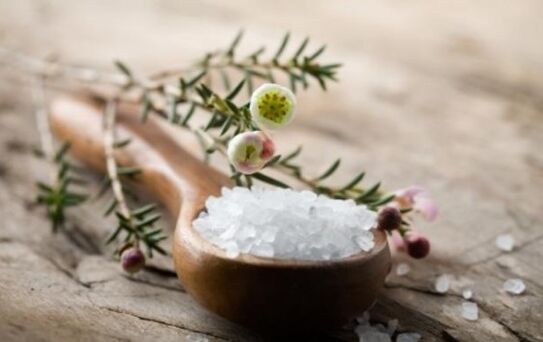
Within the common knee of the Sinovian liquid, it is very viscous, it ensures the absence of a friction of tissues. An important part of this lubricant is a hyaluronic acid, which binds proteobic to stabilize the cartilage tissue structure. In patients with arthrosis, the level of this compound in the synovial fluid was significantly reduced, as a result that this last becomes less viscous, friction increases.
Injections in Hyaluronic acid-based drugs can slow down the progress of osteoarthrosis, but only half of people with such a diagnosis gets symptomatic relief. The flow of injections is usually three weeks, while one injection is carried out every seven days. After six months, the procedures are recommended to repeat.
National medications
The arthrosis of the common knee envisages an integrated approach to treatment, and recipes for traditional medicine consist of additional therapy. It means such as decoction, the infusion of folk leaves, a mixture of aloe, vodka and honey in equal amounts, the night compresses the salt with honey and many others deserve attention. It is recommended and eaten as the earthly and jelly.
Wrist replacement
If all the above treatment methods did not bring the result, then the operation is displayed to replace the ControTez. The main goal of the operation is to renew the natural mechanical axis of the leg and complete release from pain and discomfort. In this case, any part of the wrist or the entire joint can be replaced. The constant improvement of surgical equipment and the quality of the implant gave such a procedure quite successful and widespread.























